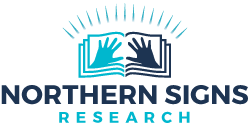
The American Sign Language Receptive Skills Test (ASL RST) is a developmental assessment for children, aged 3 to 13 years, learning ASL. It measures children’s understanding of ASL grammar, including number/distribution, negation, non/verb distinction, spatial verbs (location and movement), size/shape specifiers, handling classifiers, role shift, and conditionals.
The ASL RST consists of a vocabulary check of 20 words, 3 practice items, and a total of 42 test items, and takes approximately 10 – 15 minutes to administer.
The ASL RST Package Includes
The Test Manual (including the reproducible Score Sheet); a USB (with all video and picture test stimuli); a set of 20 picture cards (for the Vocabulary Check); and a plastic carrying case.
ASL RST Research Articles
Buy now securely with PayPal
Attention United States Customers
Language First is the US distributor for the ASL Receptive Skills Test.
Please visit their website to purchase the test with US funds and/or purchase orders.
Frequently Asked Questions
Buy now securely with PayPal
Attention United States Customers
Language First is the US distributor for the ASL Receptive Skills Test.
Please visit their website to purchase the test with US funds and/or purchase orders.

